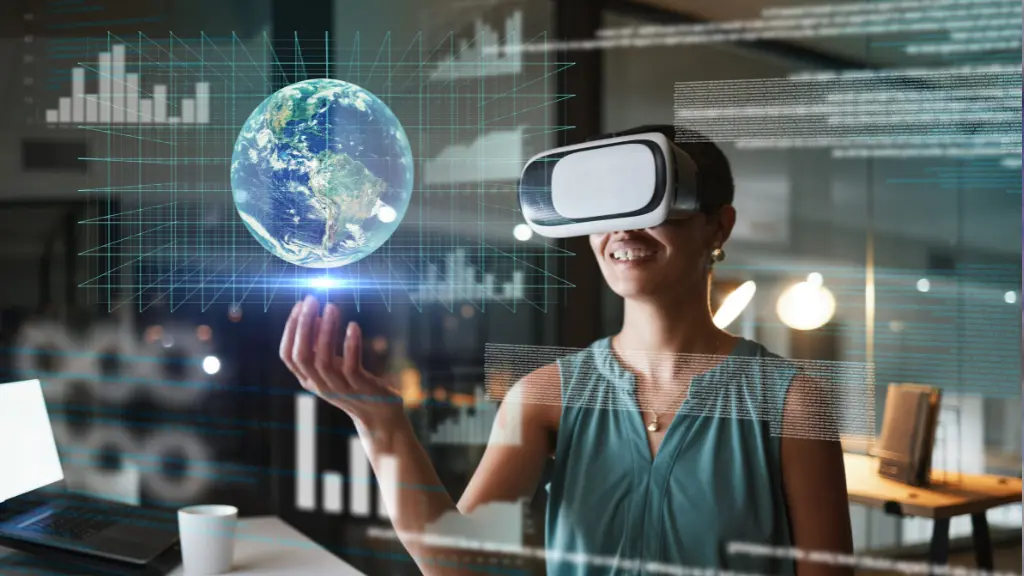With the rapid evolution of artificial intelligence, AI-generated art has become a prominent topic in the creative world. Artists, tech enthusiasts, collectors, and policymakers all wonder: should people be allowed to profit from AI-generated art?
The implications extend to ethics, copyright, and the value of human creativity itself. Here, we’ll explore the many sides of this debate to understand how AI is reshaping art and income.
You May Also Like: Universal’s Epic Universe Theme Park Opens in May
The Rise of AI-Generated Art
AI art isn’t exactly new, but it’s only recently reached levels where it can mimic or even redefine human creativity. From generating realistic portraits to abstract masterpieces, AI algorithms can produce works that resonate with viewers. This new form of art is highly accessible, allowing more people to experiment with creative outputs that would have taken years of training for human artists.
Companies like OpenAI and Google have developed programs capable of producing intricate and personalized works, many of which sell in online marketplaces. In 2018, an AI-created artwork sold at Christie’s auction house for $432,500, proving there’s a market for this kind of work. The sale also sparked discussions on whether AI art should be treated—and priced—the same as traditional art.
Understanding AI-Generated Art
AI-generated art typically requires the input of large datasets of pre-existing artwork. This process enables AI to learn patterns, colors, and brush strokes to replicate or create something entirely new. Artists using AI can choose to have minimal involvement, simply entering parameters and allowing the algorithm to create autonomously. Others may combine their input with AI’s output, which raises the question: who is the true creator?
Many AI-generated art tools allow users to adjust stylistic parameters, potentially giving some creative control back to the individual. But the ownership of the final artwork remains a grey area. Who should profit? The artist, the AI developers, or both?
Arguments for Profiting from AI-Generated Art
- Encourages Innovation: Allowing profits from AI art incentivizes further innovation and improvement in technology. As AI tools become more advanced, they open new possibilities for artists to explore and reimagine their craft.
- Broadens Artistic Accessibility: Traditional artists may spend years perfecting their skills, while AI allows more people to create stunning pieces without extensive training. Selling AI art could democratize access to the art world, enabling diverse talents to emerge.
- Blurs the Line Between Art and Technology: AI art redefines traditional boundaries of art, showing that creativity isn’t exclusive to humans. By allowing profit from AI-generated art, we acknowledge technology as a valuable tool in the artistic process.
Arguments Against Profiting from AI-Generated Art
- Concerns Over Authenticity: For many, art’s value lies in the artist’s unique vision and effort. AI-generated works can lack the personal touch that gives traditional art its soul. Critics argue that making money from algorithm-created pieces diminishes the authenticity and value of true human-created art.
- Job Displacement for Artists: With AI becoming proficient in creating “art on demand,” some fear it could replace human artists in commercial spaces. This displacement could limit opportunities for traditional artists to sustain their craft and income.
- Unclear Copyright Laws: Current copyright laws struggle to categorize AI-generated work. In many cases, the artist or developer isn’t guaranteed ownership, which creates complications for buyers and sellers alike. With AI art in a legal gray zone, profit becomes a complex issue.
Copyright and Ownership in AI Art
Copyright law, originally designed to protect human-made works, doesn’t yet account for art created by AI. Typically, the creator of the work is granted copyright, but with AI art, defining the “creator” is more challenging. Some developers believe AI art should belong to the creator who provided the original input or training data, while others argue that the algorithm itself is the creator, leaving the artwork legally unprotected.
Various countries have differing stances. For instance, the U.S. Copyright Office has refused copyright for fully AI-generated art but allows copyright for pieces where human input played a substantial role. This legal ambiguity makes it risky to buy or sell AI art as an investment, as the ownership rights might not be as secure.
The Ethical Side of AI Art Profits
The ethical considerations around AI art profits focus on originality and artistic integrity. When a machine mimics renowned artists, it raises questions about originality. Moreover, without proper regulation, AI art could be exploited, mass-produced, and sold at low costs, undermining traditional artists’ livelihoods.
There’s also the issue of AI “learning” from thousands of artworks without permission from their creators. While AI cannot directly copy existing works, it can mimic styles to an impressive degree. Some argue this imitation devalues the original artists’ contributions, which brings up concerns of plagiarism.
Future of AI in Art and Profit Potential
While AI art is still new, the industry will likely continue to grow and influence the art market. In the near future, clearer guidelines may emerge on how to assign ownership, set prices, and ensure ethical production. It’s also likely that AI art could become an accepted subgenre of the broader art market, existing alongside, rather than replacing, traditional art.
To profit from AI art responsibly, creators, collectors, and developers must respect the artistry behind traditional work and advocate for fair compensation. As AI-generated art evolves, so too will the ways we understand creativity and originality.
Tips for Buying or Selling AI Art
If you’re considering investing in AI art, keep these tips in mind:
- Research Ownership Laws: Know the current copyright rules in your country regarding AI-generated work. Look for artists or developers with clear licensing and ownership policies.
- Evaluate Artistic Value: Consider whether the piece has unique or notable characteristics. Some AI art offers exceptional beauty and innovation, making it valuable as a collectible.
- Understand the Artist’s Role: Many artists use AI as a co-creator. Knowing the extent of human input can give you a sense of the piece’s authenticity.
Conclusion
AI-generated art raises provocative questions about creativity, originality, and value in the art world. While many see AI art as a natural progression, others worry about its impact on traditional artists. Profiting from AI art isn’t inherently negative; rather, it’s about ensuring this technology respects the art community’s values and ethics.
Whether you support or oppose profiting from AI-generated art, one thing is clear: AI is transforming art in ways we couldn’t have anticipated. In doing so, it’s challenging us to rethink what we consider art and how we value it in a rapidly changing world.










